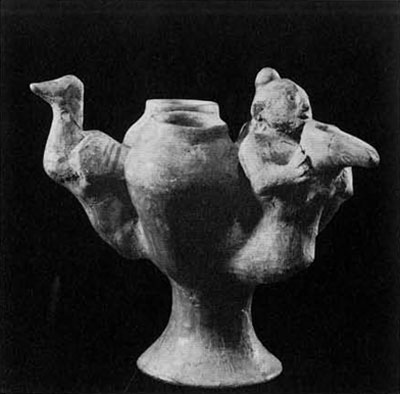
The growth of archaeological research in Iran in the last quarter century has been one of the most exciting developments of Near Eastern history and anthropology. It has spanned virtually the entire period of man’s presence on the plateau, and has provided a flood of new data and new problems, as the articles included in this volume testify. But within this continuum of archaeological work stretching from the palaeolithic to Islamic times, one period stands out, the Iron Age.
The Iron Age in Iran occupies a relatively short time span in archaeological terms, beginning somewhere prior to 1250 B.C. and running through to the Achaemenids. But within this span, more work has been concentrated than on any other period in Iranian history, and the work has touched almost every corner of the country. Over thirty sites have been excavated, stretching from Seistan in the east to the Zagros in the west, and from the lowlands of Khuzistan to the shores of the Caspian. The result of these many efforts, combined with the work of others doing survey or reviewing historical sources, has led to a new picture of Iran in the Iron Age. This picture has many gaps yet to be filled, but is even now emerging as a coherent pattern.
The beginnings of Iron Age archaeology in Iran after World War II were small and can almost be characterized as by-products of other research. On the shore of the Caspian, Carleton Coon, while excavating for evidence of early man, discovered Iron Age deposits in Hotu Cave. At about the same time T. Burton Brown excavated and published the important site of Geoy Tepe on the western shore of Lake Rezaiyeh. Both of these sites, however, were somewhat peripheral to the central concerns of Iranian Iron Age archaeology at the time. The same cannot be said of R. Ghirshman’s excavation of the Achaemenid Village at Susa. Ghirshman added the information gained from this new excavation to that from sites dug before World War II such as Tepe Sialk, Persepolis, and Pasargadae. The result was the formulation of a broad hypothesis concerning Iron Age Iran. Viewing the period as the time during which Iranians first reached the plateau, Ghirshman postulated a gradual migration from the northwest through the Zagros, with stopping points at the sites just mentioned, and with Fars as the eventual destination of the Persians. The picture presented certain problems, but was plausible given the evidence available at the time. Further information was necessary to test the hypothesis.
This new information began to appear a dozen years after the war. In the summer of 1957, Robert H. Dyson, Jr. began the excavations at Hasanlu Tepe, which can be characterized as the departure point of Iron Age archaeology in Iran in the post-War period. Dyson chose Hasanlu for a number of reasons. The previous brief work at the site by Sir Aurel Stein and by M. Rad and A. Hakimi had established that coherent results could be expected even with an excavation of limited scale. In addition, the University Museum had already dug in the Caspian region at Tureng Tepe and Belt and Hotu Caves, and at Tepe Hissar near Damghan. Work in Azerbaijan would serve to complement these earlier efforts. Azerbaijan was little explored and was an important region in both the Iron Age problem and in the greater Near Eastern picture. Finally, Hasanlu held forth the promise of serving as a focal point for exploring the archaeological sequence in Solduz, from Neolithic through to the Iron Age, and thus helping to establish a firm basis to which other work in western Iran could be tied.
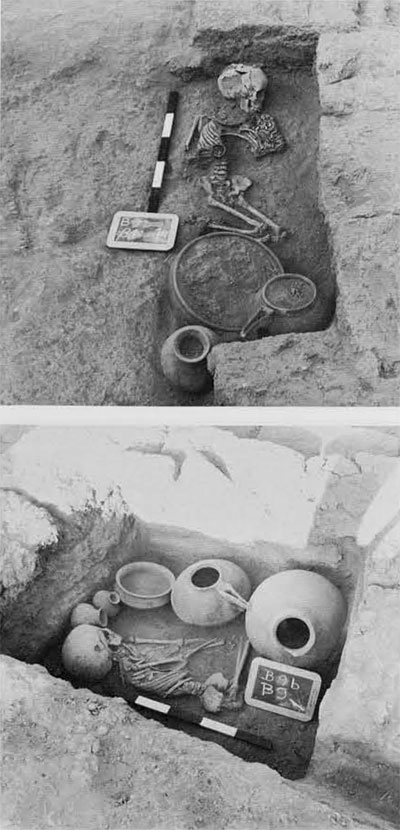
(bottom) Iron II grave at Dinkha Tepe showing standard grave furnishings of the period, characterized by vessel with attached spout, storage jar, and carinated serving bowl.
The results of the first season’s excavation at Hasanlu proved Dyson’s choice a wise one. Coherent results were achieved and the material did indeed complement that from eastern Iran. But, while Dyson’s plan for using Hasanlu as an anchor in the western Iranian sequence was not abandoned, the discovery of the Period IV deposit, with its wealth of material, meant that the emphasis in the plan had to be changed. A substantial area of the Period IV deposit had to be cleared. This then became the goal of the next few seasons, and these seasons established Hasanlu as the Iron Age par exellence in western Iran, a position it retains even now.
Soon after the launching of the Hasanlu Project, a second effort in Iranian archaeology was undertaken. David Stronach, after two seasons at Yarim Tepe in Gurgan (a site which also contained Iron Age deposits) turned his attention to problems of Achaemenid origins. Seeking a site which could hopefully be used to pin down the earliest Achaemenid traditions, and thus serve to elucidate some of the problems of the Iranian migrations and the beginnings of Achaemenid society and religion, Stronach chose to excavate at the capital of Cyrus the Great, Pasargadae. Thus, Stronach’s approach was far different from Dyson’s. Attention was focused on a specific site because it could serve to answer questions directly related to the Iron Age. The plan was to be one of working backwards, establishing the classic tradition and then seeking its antecedents. Stronach hoped, in other words, to anchor the end of the Iron Age sequence.
At the same time that work proceeded at Pasargadae, the Hasanlu Project continued its investigation of the Iron Age materials in Azerbaijan. It not only defined the Hasanlu IV assemblage, but added Hasanlu III and V to the picture. Hasanlu MA and B were crucial in filling in the gap between the monumental assemblage at Hasanlu IV and the work of Stronach at Pasargadae. Hasanlu V, preceding IV, marked the beginning of the Iron Age in Azerbaijan, and pointed up the continuity between the earliest Iron Age materials and those of Period IV.
While these two major expeditions were in progress, two other smaller projects also added to the growing corpus of information about the Iron Age in Iran. The first was the excavation at Zendan-i Sulaiman, an adjunct to the much larger effort of the German expedition at the Sassanian site of Takht-i Sulaiman. The Zendan served to fill in part of the gap between Hasanlu IV and IIIB, and at the same time provided information on the Iron Age in Kurdistan. The second project was a small excavation at the site of Khorvin to the west of Tehran, where an Iron Age cemetery was being plundered. L. Vanden Berghe stepped in and properly excavated some of the graves himself, and then in his publication also recorded much of the unscientifically excavated material with that which he had salvaged.
Enough material had by this time become available for a new synthesis of the Iron Age to be undertaken. The work of this synthesis fell to T. Cuyler Young, Jr., who had been serving as assistant director at Hasanlu since the inception of the project. Young was specifically interested in the problem of the migration of the Iranians onto the plateau, and the relationship of this historic phenomenon to the archaeological record. Using the materials from Hasanlu and Pasargadae as his anchor points, he surveyed large areas in central western Iran and Fars, and combined this with an ongoing survey of Solduz.
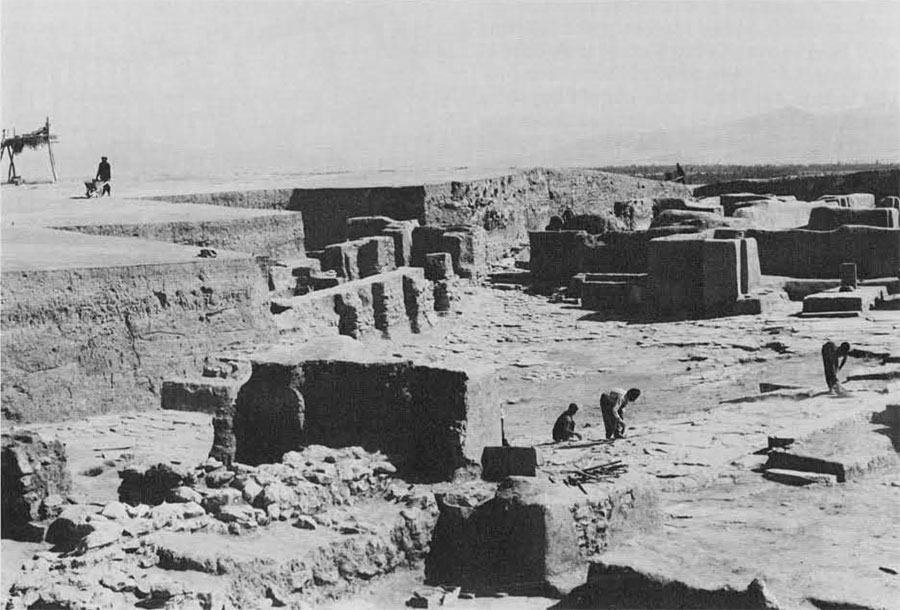
The synthesis of these surveys, taken with the Iron Age materials excavated both prior to and following the war, were combined in a series of articles in the journal Iran. These were of far-reaching importance in two ways. First, Young set out three basic divisions within the Iron Age: the “Early Western Gray Ware Horizon,” the “Late Western Gray Ware Horizon,” and the “Late Buff Ware Horizon” (for which Dyson proposed in the Journal of Near Eastern Studies in 1965 the terms Iron I, II, and III), which were followed by the Achaemenid period. Thus for the first time order was introduced into the larger picture of the Iranian Iron Age. Second, Young completely reinterpreted the old and new evidence for Iranian migrations, and proposed an east-west movement rather than a north-south one. Thus, the Bronze Age materials from the cast were related to the Iron I materials in the west, Iron II was seen as the infusion of new elements into the Iron I assemblage, and Iron III as a development from Iron II. Parts of the new picture, such as the transition from the eastern Bronze Age materials to Iron I in the west and the transition from Iron II to Iron III were still sketchy. The new evidence was too limited for certainty, but the hypothesis was convincing given the facts available.
In as far as any point in the ongoing process of archaeological discovery can be said to be a recognizable transition, Young’s articles were such. The stage initiated by Dyson had reached a plateau; the problem was redefined and a basic sequence was laid out. What was to follow was a new departure once again, although some of the old concerns continued to be apparent.
The new work on the Iron Age was much more specifically directed than that which preceded it, and was aimed at filling in some of the gaps. In a sense, western Iran continued to be the focal point, since here, on the fringes of history, were problems that held an added dimension. The most glaring omission on the western front was the almost total absence, aside from survey data, of material from the central Zagros. Here, in the area of ancient Media and the province of Luristan, the archaeological map was a virtual blank. The lack of work in Media was surprising because of the central role the Medes had played in Iron Age history, and the geographically pivotal area they had occupied. The absence of excavation in Luristan was also unusual, for the Luristan bronzes, which had long since been current on the antiquities markets of the world, were recognized as an important aspect of Iron Age Iran. Thus, it is not surprising to find at this point a number of expeditions embarking on programs of excavation in central western Iran. Two of these expeditions, those at Godin and Nush-i Jan, were direct outgrowths of earlier personal research, and both were focused upon the Medes. Others, concerned with Luristan, were undertaken by new students.
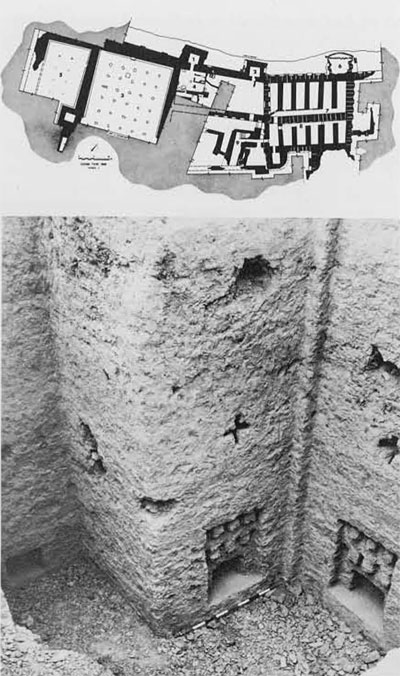
Among the first of the new projects was that begun by Young at Godin Tepe in 1965. After his two synthetic articles, Young realized that Iron III material from the region between Hasanlu in the north and the Fars sites in the south was needed to begin filling in the established framework. Godin was chosen because it occupied a strategic position on the Great Khorasan Road, the most important east-west route in Iran, and no Iron Age site had yet been dug along the western marches of this road. After inconclusive results for the Iron Age strata during the first season, the important Median manor house began to emerge in 1967, and now, although still not completely excavated, it is the largest pre-Achaemenid building on the plateau.
The second expedition to Media was that to Nush-i Jan led by David Stronach. Stronach’s reasons for turning to this area were different from Young’s, but also recognizably derived from his earlier work. Having grappled with problems of the early Achaemenid period, Stronach sought to define them further by turning to a site dating to the Iron III period. He also sought a site falling within the geographical area occupied by the predecessors of the Achaemenids, the Medes. Nush-i Jan has proved to be such a site, with its remarkable state of preservation, its “temple” with fire altar, and its close connections with both Godin and the material from Fars.
The excavations in Luristan, by Claire Goff at Baba Jan, the Danes in southern Luristan, and L. Vanden Berghe near the frontier with Iraq, were inspired in large part by a problem already mentioned, the context of the Luristan bronzes. Goff’s expedition, the most important of the three for the Iron Age horizon, followed upon extensive survey in northern Luristan and helped define the Iron Age sequence in this area. The others, more limited in extent, added details, and all have helped lay a foundation for solving the problem of the bronzes.
Concurrent with the work in the central Zagros, the northern Zagros were also being further explored, Dyson continued work at Hasanlu, excavated the small but important site of Agrab Tepe in Solduz, uncovered an extensive Iron I-II cemetery at Dinkha Tepe near Ushnuviyeh, and conducted a three-week salvage project at Ziwiye. The German expedition to Takht-i Sulaiman, in probing the lower levels of that site, uncovered Achaemenid materials. A new dimension was also added to the Iron Age of Azerbaijan with the work on Urartian sites in that area. Charles Burney undertook the excavation of an Urartian settlement at Haftavan, while Wolfram Kleiss began work on the important fortress at Bastam. A proper understanding of the Urartian presence, vital in assessing the overall picture of the development of the Iron Age in western Iran, is thus emerging.
While much of the work continued to be concentrated in the central and northern Zagros, other areas began to draw attention as well. Two Iranian expeditions near the Caspian, one to Marlik led by E. Negahban, the other to Kaluraz led by All Hakimi, revealed a new and incredibly rich face of the Iron Age in Iran. The excavation of a cemetery north of Tehran at Gheytaryeh by S. Kambakhsh Fard will also certainly prove crucial in linking the Iron Age materials from Gurgan with those of the western Caspian regions and the Zagros. In Fars, new work by Persian teams at Persepolis has yielded important materials for linking that site with earlier ones in Media, and the recent discovery of a palace of Cyrus the Great at Borazjan adds another imperial monument to the early Achaemenid period.
The area of southeastern Iran has also found a place on the map of Iron Age Iran in the last years. The excavations by an Italian mission at Shahr-i Sokhta in Seistan have revealed Achaemenid remains in this far eastern province of Iran. More important still for the Iron Age proper are the excavations by C. C. Lamberg-Karlovsky at Tepe Yahya near Kerman, where preliminary work indicates that much of the Iron II-III and Achaemenid sequence is present. Current excavations at Yahya will thus probably go far in establishing the Iron Age sequence for this part of Iran.
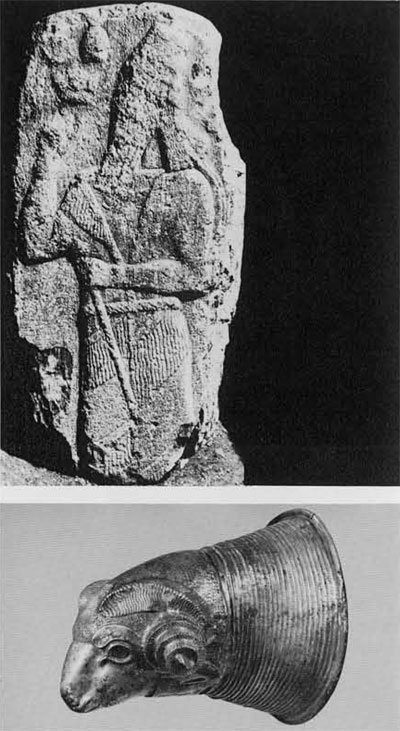
(bottom) Silver ram’s head rhyton from Kurdistan, said to belong to theZiwiye Treasure, 7th century B.C.
Museum Object Number: 53-31-1
Finally, work has been going on in Khuzistan as well. This area, where Iranian archaeology was born, has in recent years seen the excavation of the late Elamite site of Haft Tepe by Ezat Negahban, while the French mission to Susa under the direction of Jean Perrot has once again turned to the Achaemenid remains at that site.
This, then, is the picture that can be drawn some twenty-five years after digging resumed in Iran following World War II. It is infinitely fuller than could have then been expected, and in its many directions a coherent overall pattern is discernible. After a tentative beginning, the problem of the Iron Age was firmly taken in hand by Dyson and synthesized at a first level by Young. Since that synthesis, much of the work has been directed at filling in the gaps in the picture. In the west, the amount of work has meant that quite specific issues could be investigated. Hasanlu will ultimately provide a very important picture of social organization on a monumental site. Godin and Nush-i Jan will go far in allowing us a view of Median culture and both will add to our rather sketchy understanding of the first Iranian empire. The Urartian influence is slowly beginning to be understood, and Luristan is no longer a blank on the archaeological map. Areas outside the western Zagros are being explored and archaeologically related to the proto-historic west. Finally, the Achaemenids, whose achievements cap the development of Iron Age Iran, are being studied in all parts of the country.
Much yet remains to be done. In the far northeast, we have no information. The fringes of the great central desert need exploration and excavation. The Caspian shore is still an enigma, and its relationship to the plateau needs elucidation. Even the west, the scene of so much activity, needs more work. The critical interplay between Assyria and Iran spans virtually the entire Iron II-III period, and yet no Assyrian site has been excavated. Furthermore, the quantity of material now excavated means that refinements are possible that were unthinkable only ten years ago. Our understanding of the cultural dynamics of the Zagros as revealed in the Assyrian texts continues to grow, and the relationship of this to the material culture of the area is a fertile field that is just now beginning to be plowed. Extensive survey work is still needed, as is publication of results so far achieved. All this, however, makes the Iron Age a period of Iranian archaeology that continues to fascinate and attract archaeologist and historian alike.
